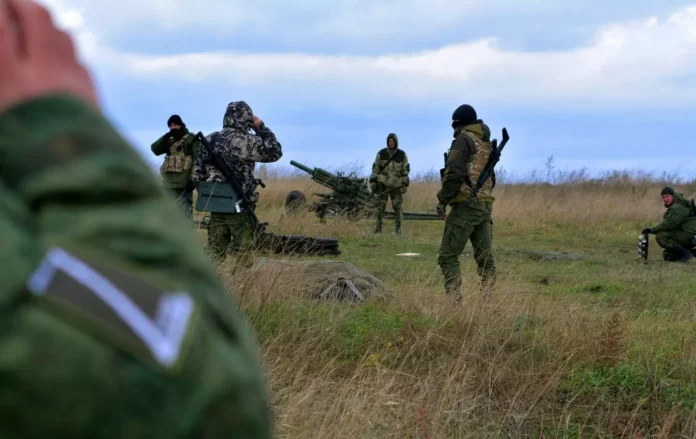The analysts of DeepState project have identified a crucial advantage that the Russian occupiers have been leveraging to constantly advance on the frontlines. This strategic advantage has been aptly termed as the “second army of the world”, and it has played a pivotal role in bolstering the military prowess of the Russian Armed Forces.
The DeepState project, a renowned research initiative that specializes in analyzing global security issues, has recently shed light on the Russian occupiers’ continuous dominance on the frontline. Despite facing stiff resistance from the Ukrainian Armed Forces, the Russian Military has managed to make incremental gains and maintain a firm grip on the occupied territories. The analysts at DeepState have attributed this success to a strategic advantage that the Russian occupiers possess – the “second army of the world.”
So, what is this “second army of the world” that has been giving the Russian occupiers an upper hand on the frontlines? According to the analysts at DeepState, it refers to the vast network of propaganda, disinformation, and psychological warfare tactics that the Russian government employs to manipulate public opinion and destabilize their adversaries. This unconventional approach, which is commonly known as “hybrid warfare,” has become a hallmark of Russia’s military strategy in recent years.
One of the key elements of this “second army” is the extensive use of media outlets and social media platforms to disseminate false information and propaganda. The Russian government has been able to exploit the loopholes in the digital space and use it as a weapon against their enemies. They have created fake news stories, manipulated images and videos, and even deployed internet trolls to spread disinformation and sow discord among their adversaries.
However, the success of this “second army” is not solely reliant on propaganda and disinformation. The Russian government has also invested heavily in building a formidable cyber army that can launch sophisticated cyberattacks on their enemies. This cyber army, which is under the command of the Russian military intelligence agency GRU, has been responsible for several high-profile cyberattacks in the past, including the 2016 cyber-attack on the Democratic National Committee in the United States.
In addition to these unconventional warfare tactics, the Russian government has also been using a combination of conventional and unconventional military strategies to maintain their dominance on the frontlines. The Russian Armed Forces have been strategically deploying their troops, utilizing air and naval support, and actively engaging in proxy wars to gain control over the occupied territories.
The analysts at DeepState believe that the success of this “second army” has been instrumental in the Russian occupiers’ continuous advancement on the frontlines. The combination of propaganda, disinformation, cyberattacks, and conventional military tactics has allowed them to maintain a constant foothold in the occupied territories and expand their influence in the region.
However, the use of these tactics has not gone unnoticed. The international community, including the United Nations and NATO, have condemned Russia’s actions and imposed sanctions on the country. The Ukrainian government and its allies have also been actively countering the Russian propaganda by launching their own media campaigns and exposing the truth behind the false narratives.
In conclusion, the analysts at DeepState believe that the “second army of the world” has been the driving force behind the Russian occupiers’ success on the frontlines. This strategic advantage, consisting of a network of propaganda, cyberwarfare, and unconventional military tactics, has enabled the Russian government to maintain their grip on the occupied territories and advance towards their ultimate goal. However, with the efforts of the international community and their adversaries, it remains to be seen how long this “second army” can sustain its dominance on the frontlines.

